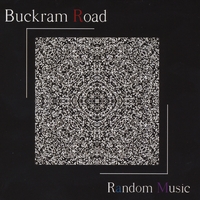Newsday and the
Long Island Business News are actively soliciting public input as to what the
public believes are the most important issues facing Long Island. This is both an interesting and positive development.
I suspect that what they will find at the end of the day is what
they already suspect or know the issues to be; taxes, housing, transportation, energy, real estate development and perhaps open space, job development and a number of other quality of life issues.
Long Island is, right now, a pretty nice place to live for most folks and
Newsday and others properly point out that we must start planning now so that it remains in good shape.
Of course
Newsday and LI Business are also reacting to the new way people get their information and are, as they should, attempting to stay current. That aside, what they are doing does help create part of the open dynamic we've are striving for in our Long Island 3.0 and New York 3.0 concepts.
Identifying the issues is probably the easy part. Solving them is not.
To solve the issues we need a
new approach to public policy. Organizations, of all stripes, must think outside their "silos" and find
real approaches to cooperate with one another. We've suggested a number here on
LIIF, but as we've also said, Long Island is home to some of the smartest folks on the planet. There are many good, workable ideas out there just waiting for leadership.
If you were an engineer and had a "design flaw" in your project, would you keep trying to get the design to work or would you change your design? Using the same methods for approaching Long Island issues is
analogous to a "design flaw." No matter how hard you try the results will never come out the way you want them to be.
Leadership may be political, the media or from a host of other sources. Leadership requires sacrifice not only on those the "leaders" are attempting to motivate, but on the "leaders" as well.
The idea of sacrifice for the common good is essential for long term positive change. It is what got our parents and grandparents through World War II. Big changes require big sacrifice.
People must "buy in " to the change and trust that the information they get is accurate and fairly presented. We've attempted in some past posts to begin to construct a
"decision model" for Long Island which is essential in entering a new phase of Long Island's future.Can we put aside partisan and
pre-established opinions and methods of thinking to forge a new Long Island? Time will tell.
I prefer to think we're up to the challenge. How about you?
What do
you think?
 We've posted multiple times about the need to "speak a common language" and to create an a "dynamic interaction of organizations and information" as part of our Long Island 3.0/Long Island Congress leitmotif.
We've posted multiple times about the need to "speak a common language" and to create an a "dynamic interaction of organizations and information" as part of our Long Island 3.0/Long Island Congress leitmotif.



























































